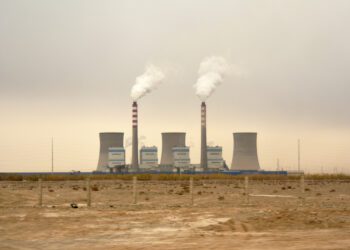Stopped at a school crossing a couple of weeks ago, a cheerful tangle of tweens turned towards me and a helpful kid called out: “Hey, your charging flap is open!”
It was. But the car wasn’t obviously an EV and the students, maybe 10 or 12 years old, seemed the unlikeliest of motorheads. And yet they just assumed the wayward flap wasn’t meant to cover a gas cap.
Maybe this whole “electrification” thing is really catching on, I thought, as the troop of pink backpacks bounced away down the sidewalk. But it sure is hard to know. Some analysts tell us that EVs are among the green glimmers of serious progress in replacing fossil fuels. But the headlines have soured this year, declaring an industry in trouble with sales purportedly stalling and companies retrenching. “The EV transition loses momentum” blared one headline from Postmedia’s Financial Post just this week.
Transportation is the second biggest source of fossil fuel pollution in Canada. Second only to the oil and gas industry itself. So it’s a question with real import: Do the dour headlines match the actual numbers?
What the most recent numbers show is that EV sales are still setting records. That’s true in the U.S. and Canada. And if you look beyond the usual ups and downs, the broad trend is very clear. Here’s the latest data from Statistics Canada up through the first half of 2024.
“Losing momentum? Not in the big picture,” Trevor Melanson from Clean Energy Canada told me this week. “The curve is not always a smooth line. It’s not always going to be cleanly exponential, but this narrative about slowing sales is a function of the media looking for controversy.”
The charts show a clear upward trend for EVs. Jagged, for sure, but pretty exponential overall. One thing the big picture doesn’t show is the big differences between provinces. Quebec and B.C. are moving more than twice as quickly as any other provinces. The provincial governments in B.C. and Quebec currently top up the federal rebate although Quebec says it will phase them out by 2027 and B.C. recently restricted its rebates.
And both provinces have put in place actual regulations. Both have zero emission vehicle mandates requiring automakers to sell more and more over time. It’s no coincidence those helpful tweens were British Columbians — Canada at large is lagging the global transition, but both B.C. and Quebec are switching to electric vehicles faster than the world average.
You probably know that the world leader for EVs is Norway, paradoxically Europe’s biggest oil and gas producer. Sales of pure electric cars now get measured in the high 90 percentages in Norway (96.4 per cent in September).
And the country has been at it long enough that they’re not just measuring the percentage of new cars but how much EVs have taken over the whole fleet on the road — as of September, electric cars outnumber gas and diesel burners in Norway. And that’s a crucial point. The atmosphere is indifferent to our sales figures. The pertinent question is the number of tailpipes still spewing carbon.
Norway is showing what’s possible. But the world’s biggest market for vehicles is China. And China now has the world’s biggest auto industry as well.
“Globally the transition has absolutely been accelerating,” says Melanson. “EV sales in China are headed above 50 per cent.”
North American governments seem to have only just woken up to the situation. At the beginning of October, the federal government announced Canada would slap 100 per cent tariffs on Chinese-made EVs, following the lead of the Americans. Right on its face, it’s a suspiciously round number — an extremely improbable result to have come from any detailed weighting of subsidies, incentives and industrial policies on either side of the Pacific. The rationale from Washington and Ottawa is that China is unfairly subsidizing its industry but “unfairly” is a pretty squishy term, considering the billions offered up by the U.S. Inflation Reduction Act and the various Canadian investments in battery plants, EV assembly lines and consumer rebates.
What are we to make of the big tariff slap? Are Canadians not eager to drive EVs or is the industry worried too many would be, if the price is right? We seem to have come a long way from the debate about whether EVs are too expensive — now it seems they might be too cheap.
The new tariffs highlight something few North Americans have grasped: just how big a gap China has opened on clean tech. Whether it’s solar panels or electric vehicles, batteries or supply chains, China absolutely dominates the global picture. China is deploying more solar power than the rest of the world, combined. Last year, almost 60 per cent of the world’s new electric cars were sold in China. As of this past summer, over half of new cars in China were all-electric or plug-in hybrids.
They’re getting plaudits from unexpected reviewers. The best-selling vehicle in North America is the Ford F-150, but the company’s CEO has been driving a Chinese-made EV, the Xiaomi SU7. “We flew one from Shanghai to Chicago and I’ve been driving it for six months now,” Ford CEO Jim Farley told the Everything Electric Show this week. “And I don’t want to give it up.”
But giving up gas guzzlers is a wrenching change for the established industry. Gasoline-fuelled vehicles are where they make profits. For the oil industry, transport fuel is mostly what they make, period.
In the U.S. election, EVs have emerged as a flashpoint in swing states. The Democratic senate candidate for Michigan has been forced onto the defensive, running TV ads assuring voters she lives way down a dirt road, far from the nearest charging station and would never, ever think of telling anyone what to drive.
The American EV Jobs Alliance estimates that $15 million has been spent on political ads about EVs. At least 75 per cent of that spending has been on negative attacks, paid for by outfits like the American Fuel and Petrochemical Manufacturers. The alliance’s own efforts are being outspent 9-to-1 by the Trump campaign, which is running anti-EV spots against Kamala Harris. The ads claim “Harris’s push requiring electric only is failing big and Michigan auto workers are paying the price. Massive layoffs have already started. You could be next.”
For the record, the United Auto Workers union has endorsed Harris and while she has supported California’s zero emissions vehicle mandate, she has been forced to make clear she would not implement one nationally.
By contrast, Canada does have federal regulations requiring manufacturers to sell more and more zero emission vehicles. Similar to the rules in B.C. and Quebec, the Electric Vehicle Availability Standard requires 100 per cent of passenger cars and light trucks be emissions-free by 2035.
So far, it has received surprisingly little public attention. The American election suggests that won’t last.
By Chris Hatch / Courtesy Canada’s National Observer












